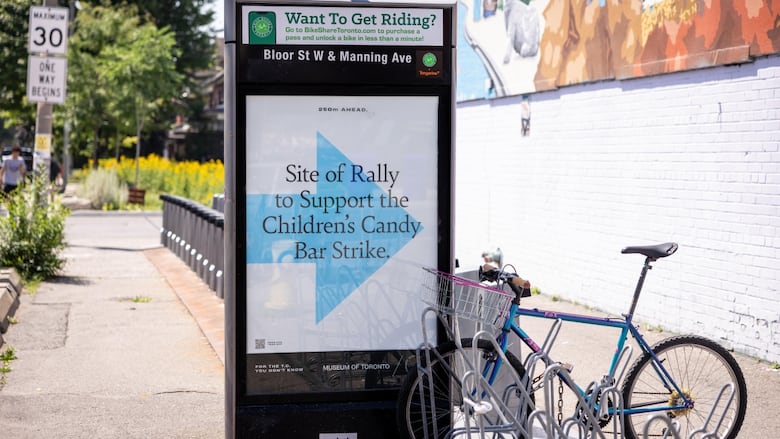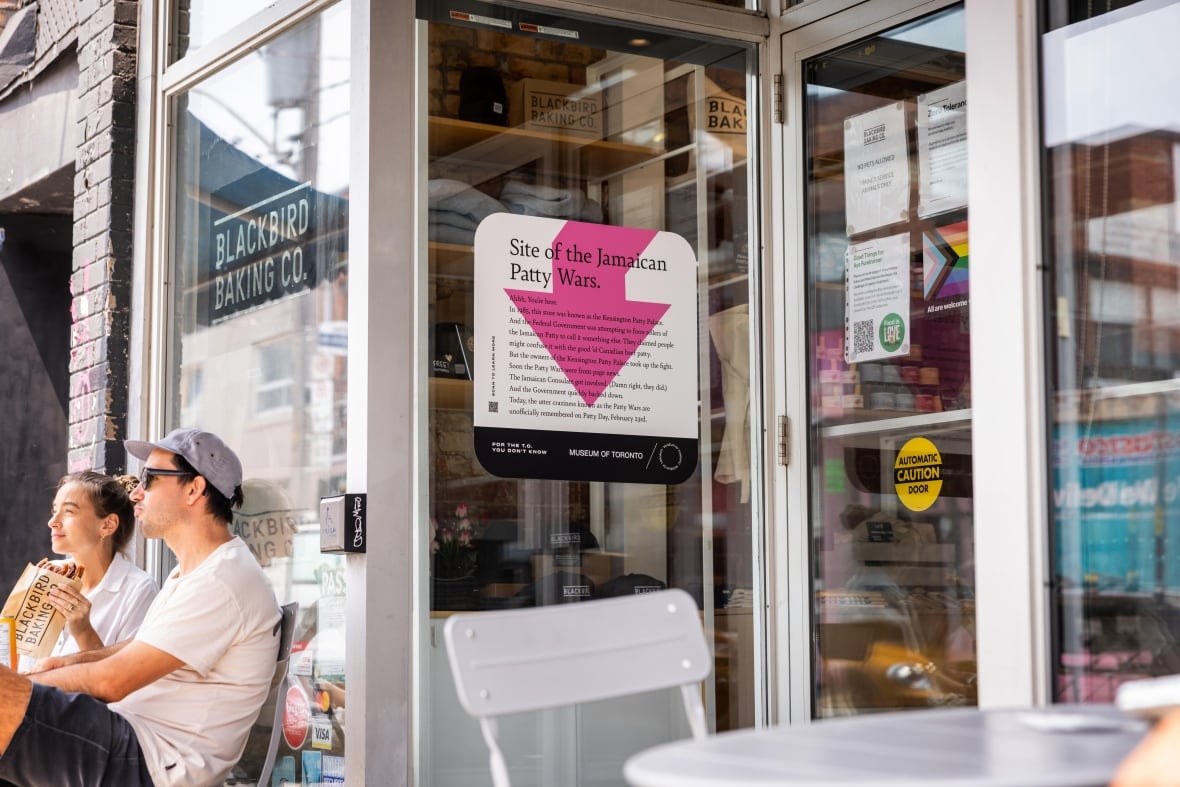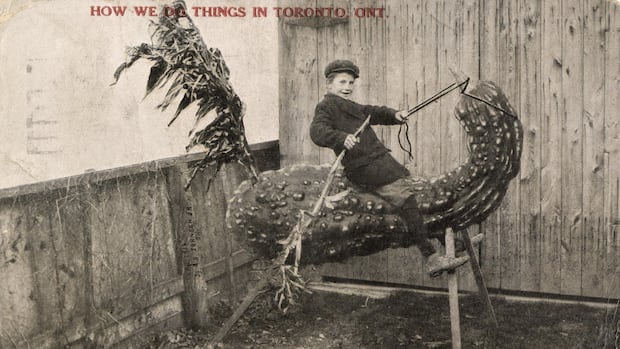Museum of Toronto launches campaign to explore city's lost history
Discover over 25 historic sites and stories as part of project The T.O. You Don't Know

The Museum of Toronto has launched a new campaign that it hopes will help residents explore the city's forgotten history.
The T.O. You Don't Know project aims to help people discover "hidden layers of the city," said Rachel Hilton, speaking on CBC Radio's Metro Morning Thursday. Hilton is the director of marketing and operations at the Museum of Toronto.
"There are lots of things that make the city much more interesting, renew our interest, connect us as Torontonians, and we thought it would be a great way for people to either explore all these sites or just renew interest in the place that they live," Hilton said.
Multiple plaques and posters have been installed at bike share stations and bus shelters around the city to raise awareness about this initiative.

Hilton said the posters were strategically placed, as they want the project to focus on "exploring the city on foot or by bike."
The museum website says that this project focuses on over 25 historic sites and stories to pay tribute to Toronto's past, such as:
-
Scene of the circus riots where American circus clowns got into a brawl with firefighters at a Toronto brothel.
-
A 13,000-year-old Indigenous road, the stretch of Davenport follows an ancient Ojibwe trail over 10,000 years old.
-
Candy bar strike at Christie Pits where kids rallied about a hike in price of candy bars and were labelled "communist pawns."
-
Bathhouse raids under "Operation Soap" which was marked as a turning point for queer activism in Toronto.
For the complete list of project sites, visit the Museum of Toronto website.
The initiative is thrilling and might astonish people with the information they discover, said Maggie Hutcheson, an assistant professor for museum studies at the University of Toronto.
"People tend to get really, really excited about peeling back layers of history in place. It moves people and surprises people," Hutcheson told CBC Toronto Thursday.
She said it inspires people when they learn about the history of an intersection they are familiar with or a story of something important in the past that connects to their present experience.
The majority of the places in the project are centred around downtown Toronto.
Hutcheson says expanding to more neighbourhoods in Toronto and including multilingual approaches to the project might attract more people.


